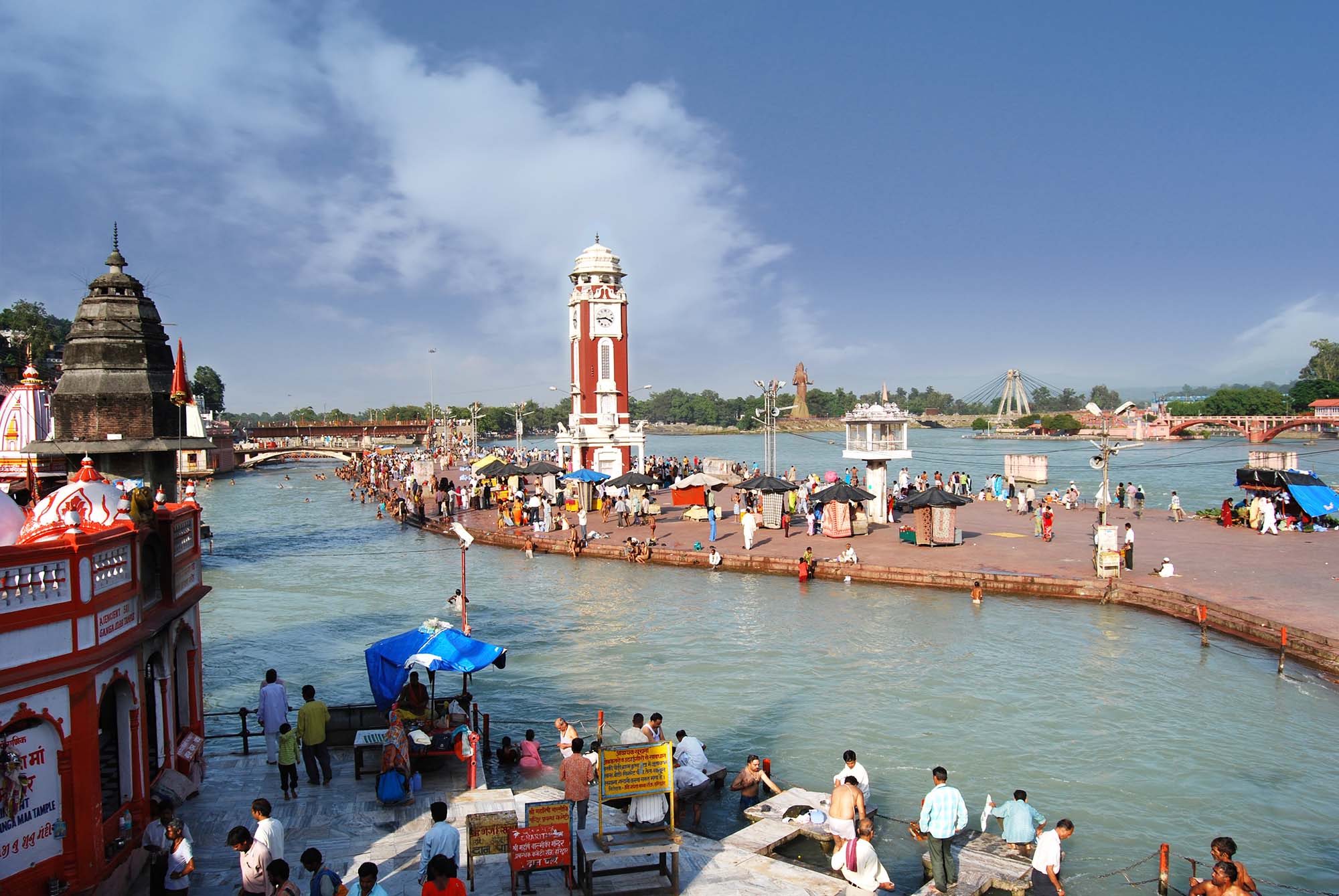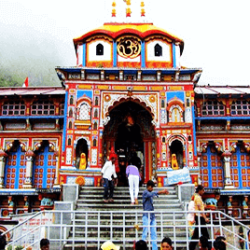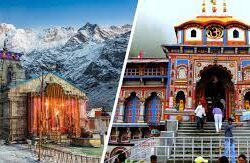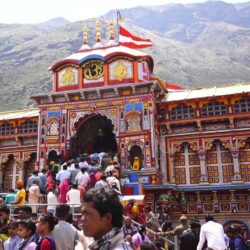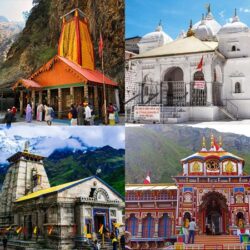Description
OverView
You will be welcomed at Railway station by our representative and will be driven to Barkot. En route you will visit Dehradun and Mussoorie. You will also visit Kempty fall during the journey. Once reached you will check into the hotel and will have an overnight stay at the hotel only.On the next day, you will be driven to Hanuman Chatti. The trekking for Yamunotri starts from Janaki Chatti. You can take the help of a Doli or even a horse to reach Yamunotri. Here few spots such as Surya Kund, Yamunotri, Divya Shila and Hanuman Chatti are the spots to visit for Darshan. After Darshan of Yamunaji, you will come back to Barkot and will have an overnight stay at the hotel only.
On the third day, you will drive to Uttarkashi, and check into the hotel. In the evening you will visit Vishwanath Temple. You will visit various temples which include Ekadasha Rudra, Kuteti Devi Temple, Gyaneshwar, Bhairav and Annapurna Devi temple.
On the fourth day, you will proceed to Gangotri. There will be a beautiful view of Himalaya from this point, and you will visit the Gangotri Temple, Submerged Shivlinga, and Kedar Ganga Sangam also. After Darshan, you will return to Uttarkashi, and overnight stay will be at the hotel only.
On the fifth day, you will be driven to Guptakashi which is 235 kilometers. After reaching there, you will check in at the hotel and will have an overnight stay at the hotel only.
On the sixth day morning, you will start the journey for Kedarnath. It’s a trekking route, and hence you can take help of a Doli or go by pony also. You will visit Gaurikund and Darshan at Kedarnath temple. At night will return to the hotel and will have an overnight stay there only.
On the seventh day, you will leave for Badrinath and en route will visit Joshimath. Here you will visit Tapt Kund, Brahma Kapal, Shshnetra, Narad Kund, Mana Village, Mata Moorti, Vasundhara, and Bhim Pul as well as Vyas Gufa.
On the Eighth day, you will leave for Rudraprayag. Here you will visit several tourist spots and temples. On the Ninth Day, you will be back to Haridwar. En route you will visit various spots of Rishikesh, which include Ram Jhula, Laxman Jhula, and Triveni Ghat. In the evening you will be dropped at the railway station as per your return journey plan.
Chardham Premium Package From Haridwar |
|
|---|---|
| Tour Name: | Chardham Premium Package From Haridwar |
| Tour Duration: | 08Nights / 09days |
| Destinations Covered: | Haridwar – Barkot- Yamunotri -Uttarkashi -Gangotri -Guptkashi -Kedarnath- Badrinath- Joshimath – Rudraprayag |
| Tour Price: | 23,000/- Per Person+5%GST(Min- 6 Person) |
Itinerary
Day 01: Haridwar – Barkot
Welcome to Chardham yatra. Arrival from railway station assist by ITT executive and Drive to Barkot via Dehradun & Mussoorie. Enroute visit Kempty Fall and others later drive straight to your Hotel for night halt.
Day 02: Barkot – Yamunotri – Barkot
Drive to Hanuman Chatti, for Janki chatti (It helps to reduce the trek upto 8 kms), trek start from here to Yamunotri (6kms). Either by walk or by horse or by Doli at own cost. Arr. Yamunotri, One can cook rice by packing it in a cloth and dipping it in the hot water of the hot kund. Pilgrims take this cooked rice home as “Prasad”. Here near the temple “Pooja” can be offered to Divya Shila, after taking bath in Jamunabai Kund’s warn water and having “Darshan” of pious “Yamunaji” returning to Hanumanchatti. Later drive back to Barkot. Overnight stay at Hotel.
Hanuman Chatti: The confluence of Hanuman Ganga & Yamuna River.
Yamunotri Temple: Maharani Gularia of Jaipur built the temple in the 19th Century. It was destroyed twice in the present century and rebuilt again.
Surya Kund: There are a Number of thermal springs in the vicinity of the temple, which flows into numerous pools. The most important of these is Surya Kund.
Divya Shila: A rock pillar, worshipped before entering the Yamunotri Temple.
Day 03: Barkot – Uttarkashi
Drive to Uttarkashi on arrival Check in the Hotel, Later visit Vishwanath Temple .Night Halt.
Uttarkashi: Situated at the bank of river Bhagirathi. The temple of Lord Vishwanath is located here where a massive iron trident is erected. The other important temples situated here are Annapurna Devi Temple, Ekadash Rudra, Bhairav, Gyaneshwar and Goddess Kuteti Devi.
Day 04: Uttarkashi – Gangotri – Uttarkashi
We proceed to Gangotri (3048 mts), enroute we enjoy picturesque Harsil village, Bhagirathi River and the most magnificent view of the Himalayas . After Gangotri Darshan we return to Uttarkashi. Overnight stay at Uttarkashi.
Gangotri Temple: The temple, constructed by the Gorkha General Amar Singh Thapa in the 18th Century, is situated on the right bank of Bhagirathi.
Submerged Shivling: Submerged in the river, this natural rock Shivling is the place where, according to mythology Lord Shiva sat when he received the Ganga in his matted lock. It is visible in winter months when water level decreases.
Kedar Ganga Sangam: Around 100 Yards from the Ganga Temple flows the river Kedar Ganga. Starting from the Kedar Valley, this river meets the Bhagirathi on its left bank.
Day 05:Uttarkashi- Guptkashi
Early morning, drive to Guptkashi .On Arrival Check in Hotel, night halt.
Day 06: Guptkashi – Kedarnath- Guptkashi
Morning drive to Sonprayag, Trek start from Sonprayag to Kedarnath (3584 mts) on foot or on by pony / Doli. Tour members should carry personal medicines, heavy woolen, tolietteries and clothes for an overnight halt at Kedarnath. Check in Hotel. Later visit Kedarnath Temple. Later back to Guptakashi. Night halt.
Gaurikund: At a distance of 5kms from Sonprayag and at an altitude of 1982 meters, one can take bath in the hot water pond here and visit the Gauri Temple. This is the place where Goddess Parvathi meditated to attain Lord Shiva. It is the base for a trek to Kedarnath.
Kedarnath: The Kedarnath shrine, one of the 12 jyotirlingas of Lord Shiva, is a scenic spot situated, against the backdrop of the majestic Kedarnath range. Kedar is another name of Lord Shiva, the protector and the destroyer. According to legend, the Pandavas after having won over the Kaurava in the Kurukshetra war, felt guilty of having killed their own brothers and sought the blessings of Lord Shiva for redemption. He eluded them repeatedly and while fleeing took refuge at Kedarnath in the form of a bull. On being followed he dived into the ground, leaving his hump on the surface. The remaining portions of Lord Shiva appeared at four other places and are worshipped there as his manifestations. The arms appeared at Tungnath, the face at Rudranath, the belly at Madhmaheshwar and his locks (hair) with head at Kalpeshwar. Kedarnath and the four above-mentioned shrines are treated as Panch Kedar.
Day 07: Guptkashi – Badrinath
Drive to Badrinath via Joshimath. Check in Hotel. Later at evening visit Badrinath Temple for Aarti. Overnight stay.
Badrinath one of the ‘Four Dhams’ is one of the most celebrated pilgrimage spots of the country and is situated at an elevation of 3,133 meters, guarded on either side by the two mountain ranges known as Nar & Narayan with the towering Neelkanth Peak providing a splendid backdrop. This revered spot was once carpeted with wild berries. Thus the place got the name “Badri van”, meaning “forest of berries”.
Tapt Kund : Natural thermal springs on the bank of the river Alaknanda, where it is customary to bathe before entering the Badrinath temple.
Narad Kund : A recess in the river, near Tapt Kund, forming a pool from where the Badrinath idol was recovered.
Brahama Kapal : A flat platform on the bank of river Alaknanda. Hindus perform proppitiating rites for their deceased ancestors.
Sheshnetra : 1.5kms. away is a boulder having an impression of the legendary serpent, better known as the Sheshnag’s eye.
Charanpaduka : 3kms. away is a beautiful meadow where the footprint of Lord Vishnu is seen on a boulder.
Mata Murty Temple : Devoted to the mother of Sri Badrinathji. Other important temples include Sesh Netra Temple , Urvashi Temple and Charanpaduka.
Mana Village : Inhabited by an Indo-Mongolian tribe, it is the last Indian village before Tibet .
Vasundhara : As the name suggests, vasundhara is a magnificent water fall. This place is 5 kms. from Badrinath out of which 2 kms. is motorable upto Mana.
Bhim Pul : On the other side of Mana village, a massive rock forming a natural bridge, lies over the roaring Saraswati river. It presents a spectacular view of water thundering down through the narrow passage under the rock and is believed to have been placed there by Bhim, the second eldest among the five Pandava brothers.
Vyas Gufa (cave) : Near Mana Village, this is a rock-cave where Ved Vyas is believed to have composed the Mahabharata and the pauranic commentaries.
Day 08: Badrinath – Joshimath – Rudraprayag
Early morning, pilgrims after having a bath in the Taptkund have the Darshan of Badrivishal. Brahamakamal is significant for Pinddan Shraddh of ancestors (Pitrus). There are other interesting sightseeing spot like Mana, Vyas Gufa, Maatamoorti, Charanpaduka, Bhimkund and the “Mukh” of the Saraswati River . Just within the three kms of Badrinathjee. Later drive back to Rudraprayag via Joshimath. Check in Hotel.
Joshimath is situated on the slopes above the confluence of Alaknanda and Dhauliganga. Of the four ‘Maths’ established by Adi Shankaracharya, Joshimath is in the Badrinath to Joshimath and installed in the temple for people to worship. There are many temples in the township most important is the temple of Nir Singh in commotion of Lord Vishnu. The left arm of this deity is with time and the popular belief holds that the day the the arm completely withers Badrinath valley will cease to exist and the Gods will transfer the residence into the neighboring Niti Valley at Bhavishya Badri. Joshimath is connected by regular bus service to Rishikesh, Haridwar, Badrinath and many other centres in the region.
Day 09: Rudraprayag – Haridwar
Morning drive back to Haridwar. Enroot visit Rishikesh, the ‘place of sages’ is a celebrated spiritual town on the bank of Ganga and is surrounded by Shivalik range of the Himalayas on three sides. It is said that when Raibhya Rishi did hard penances, God appeared by the name of ” Hrishikesh ” and this area hence firth came to be known as Rishikesh. Temples & Sight Seeing – Laxman Jhulla, Ram Jhulla, Triveni Ghat, Bharat Mandir, Ashram, Parmarth Ashram later drive to Haridwar. Drop at railway station.
Price
Call for Best Deal: +91 9870240354
Hotels Details:
Call for Best Deal: +91 9870240354
Inclusions
- Pick up and drop from airport/railway/bus station.
- Accommodation on double/twin sharing basis.
- All breakfast included at hotels.
- All transfers and sightseeing by private A/C vehicle.
- Driver’s bata, toll, parking, road tax, fuel charges All applicable taxes.
Exclusion
- Service Tax – 5% GST Extra.
- Any air/bus/rail fare Any other meals not mentioned in package inclusions.
- Any other destination not mentioned in itinerary.
- Any personal expenses such as laundry, room service, mini bar, telephone etc.
- Guide charges/boating charges/entrance fees for any sightseeing
- Any services or activity charges other than those included in inclusions.
- Supplementary cost for festival period, long weekend or peak season .
FAQs
Q1: What is the “Chardham Yatra Ex-Haridwar” tour package?
The “Chardham Yatra Ex-Haridwar” tour package is a sacred pilgrimage journey that takes you to the four revered Hindu shrines of Yamunotri, Gangotri, Kedarnath, and Badrinath. This comprehensive package offers a spiritual experience for devotees to seek blessings and witness the natural beauty of the Himalayas. The package includes transportation from Haridwar, accommodation, guided temple visits, and an opportunity to immerse yourself in the serene atmosphere of these holy sites.
Q2: What are the key highlights of the “Chardham Yatra Ex-Haridwar” tour package?
The “Chardham Yatra Ex-Haridwar” tour package offers a range of captivating highlights. Travelers will have the chance to visit the revered shrines of Yamunotri, Gangotri, Kedarnath, and Badrinath, witness the natural beauty of the Himalayas, and participate in spiritual rituals. The package includes guided temple tours, darshans (visits), and opportunities for cultural interactions, making it a deeply enriching pilgrimage experience.
Q3: What can travelers expect during the “Chardham Yatra Ex-Haridwar” tour package?
During the “Chardham Yatra Ex-Haridwar” tour package, travelers can expect a spiritually immersive journey. The package includes transportation, accommodation, guided temple visits, darshans, and opportunities for prayers and meditation. Travelers will have the chance to connect with the divine, witness the majestic landscapes of the Himalayas, and experience moments of introspection and tranquility.
Q4: How long is the typical duration of the “Chardham Yatra Ex-Haridwar” tour package?
The “Chardham Yatra Ex-Haridwar” tour package generally spans around 10 to 12 days, providing ample time for a comprehensive exploration of the four Chardham shrines and their surroundings. The itinerary is thoughtfully designed to offer a well-paced and balanced travel experience, ensuring that participants have the opportunity to fully engage in the spiritual rituals and natural beauty of the region.
Q5: Can travelers customize the “Chardham Yatra Ex-Haridwar” tour package?
Customization options may be available for the “Chardham Yatra Ex-Haridwar” tour package. Travelers can inquire about adding specific activities, adjusting the itinerary, or extending their stay. Our customer service team can provide information on customization possibilities and any associated costs to tailor the tour to individual preferences and requirements.
Q6: How can travelers book the “Chardham Yatra Ex-Haridwar” tour package?
Booking the “Chardham Yatra Ex-Haridwar” tour package is a straightforward process. Travelers can visit our official website to check for available departure dates, package details, and the booking procedure. If you have any questions or need assistance, our customer service team is available to guide you through the booking steps and provide necessary information for a seamless booking experience.
Q7: When is the best time to undertake the “Chardham Yatra Ex-Haridwar” tour package?
The “Chardham Yatra Ex-Haridwar” tour package is usually undertaken during the months of May to June and September to October, as these months offer favorable weather conditions for travel to the Himalayan region. The availability of the package may vary based on the seasonal demand and specific travel dates. It’s advisable to plan and book in advance to secure your spot on this spiritually significant journey.
Q8: What essentials should travelers pack for the “Chardham Yatra Ex-Haridwar” tour package?
Travelers should pack appropriate clothing suitable for temple visits and outdoor activities in the Himalayas. Additionally, bring essentials such as personal identification, travel documents, comfortable walking shoes, warm clothing, sunscreen, a hat, sunglasses, and a camera to capture the journey’s memorable moments. Consult the detailed packing list provided by the tour operator for specific guidance on what to bring.
Q9: Is the “Chardham Yatra Ex-Haridwar” tour package suitable for travelers of all ages?
Yes, the “Chardham Yatra Ex-Haridwar” tour package is designed to accommodate travelers of all ages, including families, couples, and solo travelers. The package offers a blend of spiritual experiences and natural beauty that can be enjoyed by people with varying interests and preferences. Participants should be in good health to fully engage in the temple visits and outdoor activities.
Q10: How physically demanding is the “Chardham Yatra Ex-Haridwar” tour package?
The “Chardham Yatra Ex-Haridwar” tour package involves moderate walking and physical activities, particularly during temple visits and sightseeing in the Himalayas. While the tour is designed to be accessible to a wide range of participants, travelers with mobility concerns should discuss their specific requirements with the tour operator during the booking process. This will allow the operator to make suitable arrangements and ensure a comfortable and enjoyable experience for all participants.


